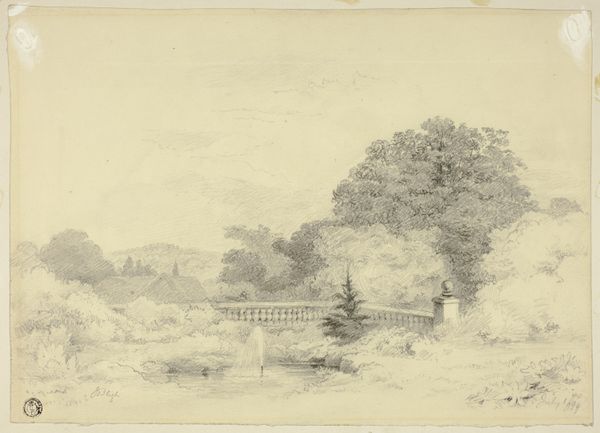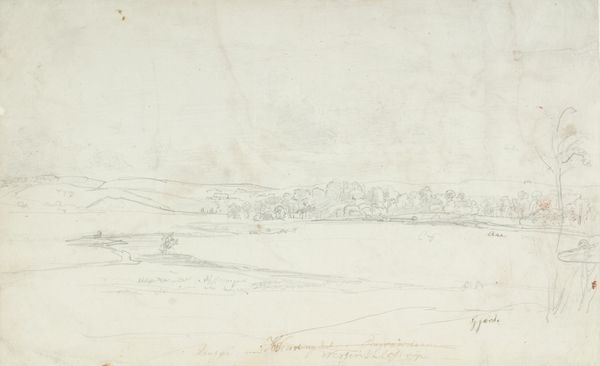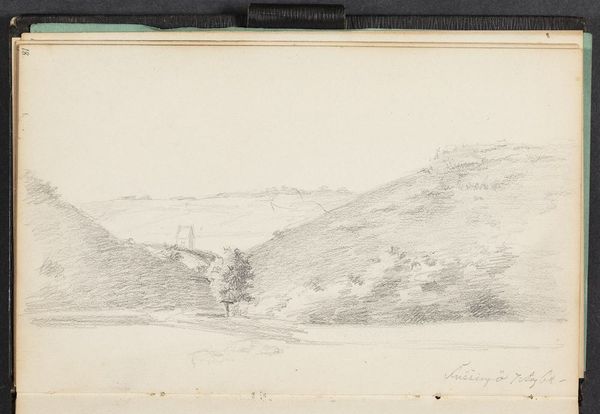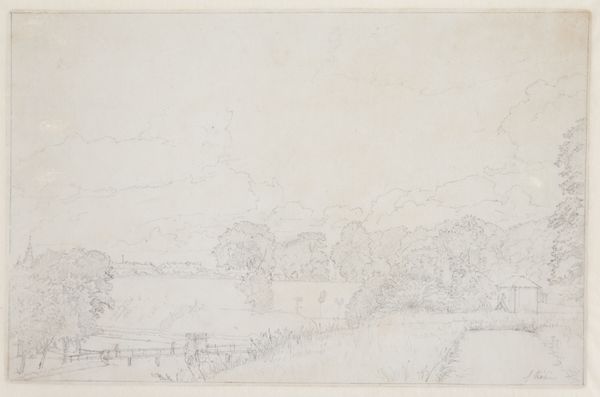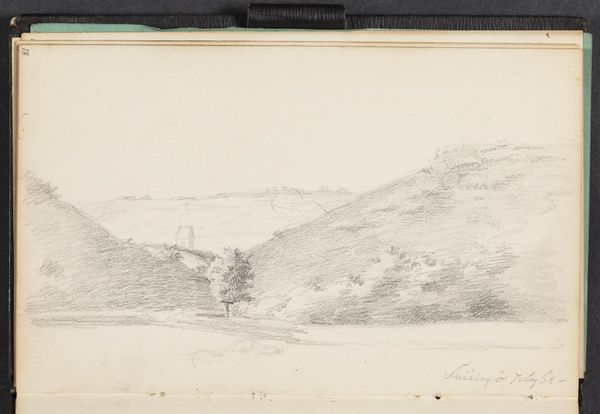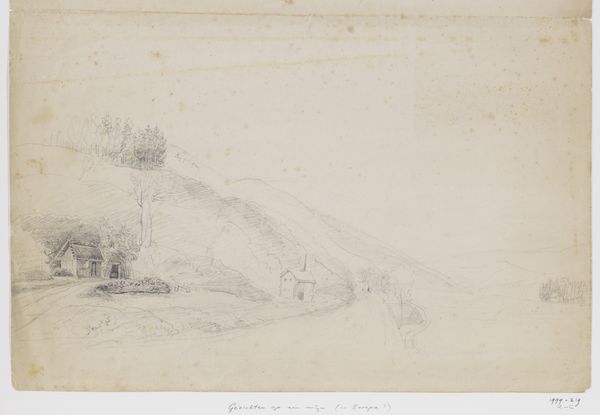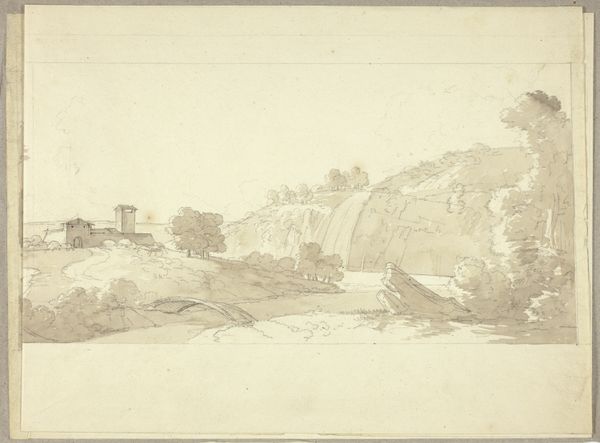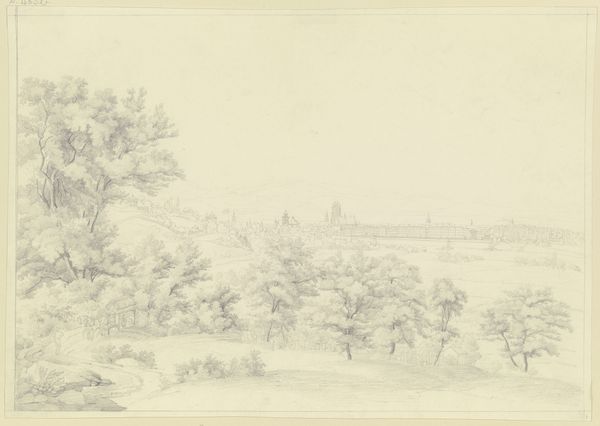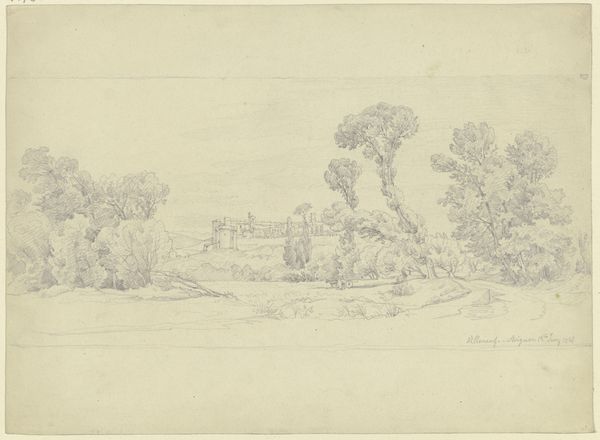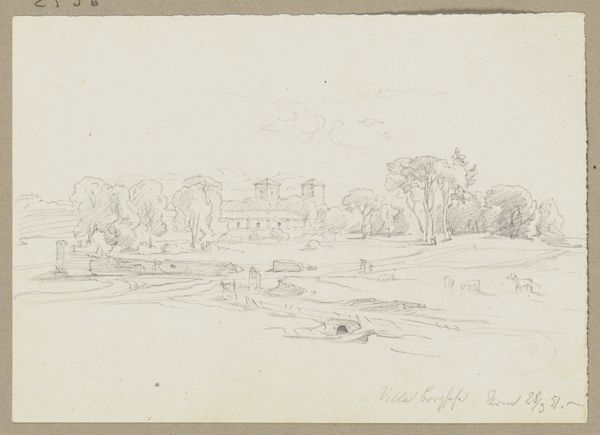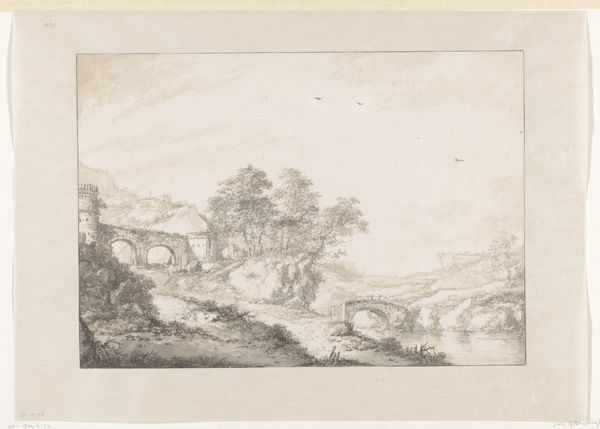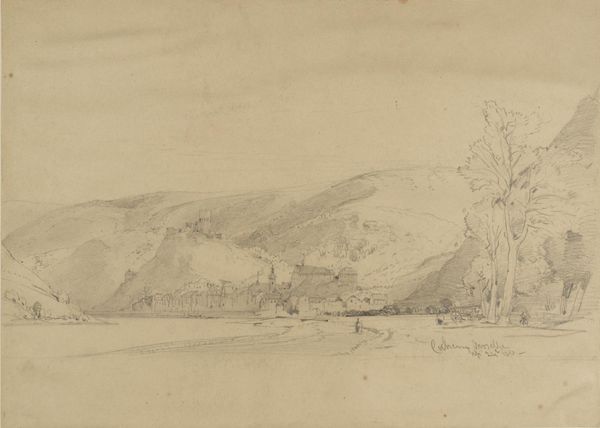
drawing, plein-air, watercolor
#
drawing
#
plein-air
#
landscape
#
etching
#
watercolor
#
romanticism
#
watercolor
Dimensions: Sheet (through mat): 10 1/4 × 20 9/16 in. (26 × 52.2 cm)
Copyright: Public Domain
Editor: So here we have Edward Lear’s "Pentedatelo, Calabria, Italy," made in 1847. It’s a watercolor and drawing that gives a very delicate, almost faded, impression of the Italian landscape. What strikes me is how understated it is; what are your thoughts on this piece? Curator: Understated, yes, but let's think about why. Lear was working en plein air, capturing a specific location. But more than just replicating what he saw, this piece is about the *process* of observation and recording. The materiality of the paper, the subtle gradations of the watercolor, and the clear outlines created via drawing underscore that point. How do these material elements influence your understanding of the landscape itself? Editor: I suppose I hadn't considered how deliberate the choice of materials would be. So you're saying it is less about showing Italy, and more about the very act of an artist *seeing* Italy through the lens of watercolor and drawing materials? Curator: Precisely. And let’s also consider the social context of the Romantic movement, and the artistic conventions they deployed for representing “untamed” landscapes. Artists were often drawn to remote and picturesque locations. Calabria was, even then, a site invested with notions of unspoiled natural beauty. How do you think this contrasts with the more idealized landscapes made in studios at the time? Editor: Interesting! I see your point; in a studio, you're manufacturing an image, whereas here, the material limitations and the immediate environment shape the artwork. Curator: Right, and the choice to use watercolor, typically seen as a less prestigious medium compared to oil paint, challenges the hierarchy of artistic production. What do we make of that statement about craft? Editor: Well, this has totally shifted how I see the artwork, from just a simple landscape to a commentary on art-making itself. Curator: Absolutely, looking at art through a materialist lens, the drawing provides a way into thinking about production, place, and perception.
Comments
No comments
Be the first to comment and join the conversation on the ultimate creative platform.
